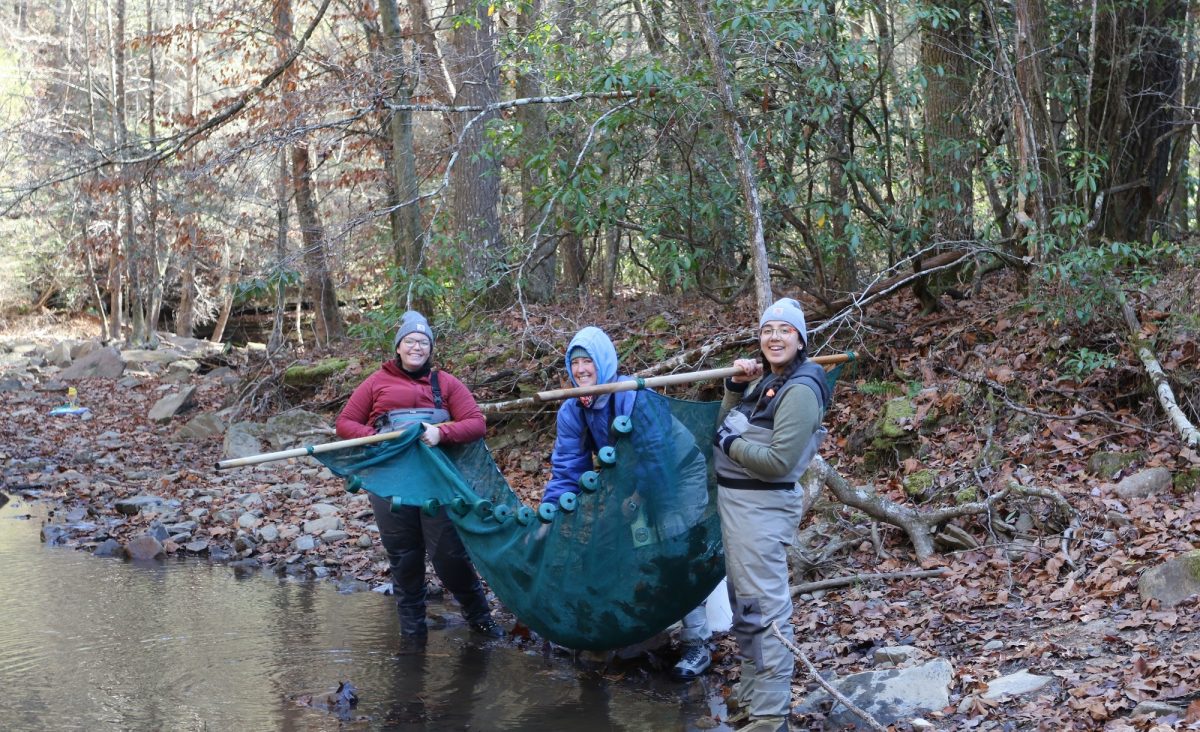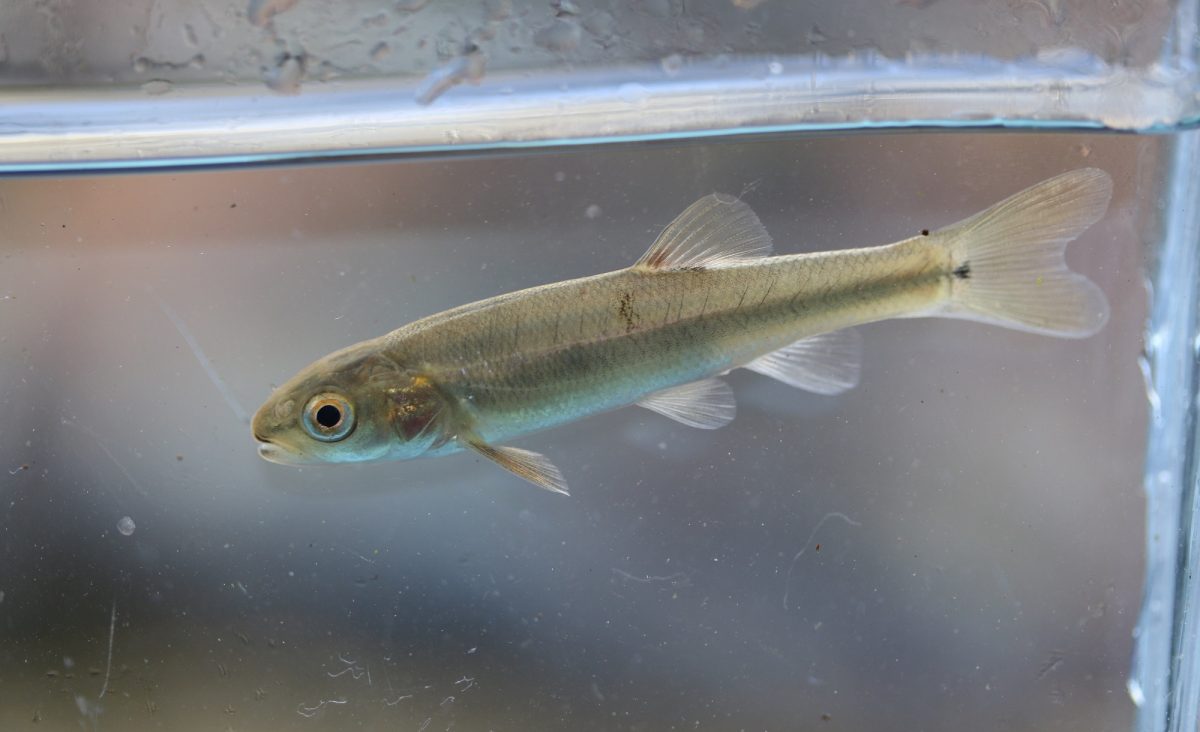Chattanooga, Tenn. (Dec. 1, 2023) – To kick off World Wildlife Conservation Day today, the Tennessee Aquarium wanted to share a positive update from our freshwater scientists about the status of endangered fish living in streams near Chattanooga that were drastically impacted by this fall’s prolonged drought.
In the last two weeks, the area around Chattanooga has received more than 2.5 inches of rain. That’s more than five times the amount that fell in our area during the previous 72 days. This has helped to restore some flow to streams on Walden Ridge, which are home to the world’s only known populations of Laurel Dace — one of North America’s 10 most-imperiled fish species.
During a trip earlier this week to routine conduct research on fish populations in streams along the ridge, scientists from the Tennessee Aquarium Conservation Institute checked in on sites that two weeks ago had dwindled to a trickle or even a series of isolated pools. They observed significantly more water flow than during their previous visit on Nov. 1, a welcome sign!
The rain has helped offset some of the drought’s impact and led the U.S. Drought Monitor to downgrade our area from D5 (“exceptional drought”) to D4 (“extreme drought”). However, there will need to be many more significant rainfall events to restore conditions to normal, says Aquatic Conservation Biologist Dr. Bernie Kuhajda.

Freshwater scientists with the Tennessee Aquarium Conservation Institute collect fish in seine nets as part of a routine study of fish movement through streams on Walden Ridge. During this work, they observed that water levels in these creeks had improved after recent rainfall events tempered the effects of the prolonged drought in Southeast Tennessee.
“The significant rain helped, but there is still very little water in the creek we visited,” he says. “One site had pools that were full and some water flowing, which alleviates the immediate crisis. Another creek had full pools but very little flow.”
In addition to their observations of increased water volume in these streams, freshwater scientists conducting the stream movement study found that the fish they collected were healthy and not showing indications of stress.
While these signs point to a general improvement to conditions in these streams, Dr. Kuhajda stressed that the ship hasn’t completely righted itself yet.

A Creek Chub hovers in a photographic aquarium after being collected by scientists from the Tennessee Aquarium Conservation Institute from a creek atop Walden Ridge. The ridge also is home to the world’s only known populations of Laurel Dace, considered by scientists as one of the top 10 most-endangered fish in North America.
“A few more weeks without rain, and we may be back to where we were before the rain event a week ago,” he says. “We’re still not out of the woods.”
Scientists from the Tennessee Aquarium Conservation Institute and partnering agencies, such as U.S. Fish and Wildlife Service, will continue to monitor conditions in streams that are home to the Laurel Dace and the Barrens Topminnow, another endangered fish found in a handful of streams in Middle Tennessee.